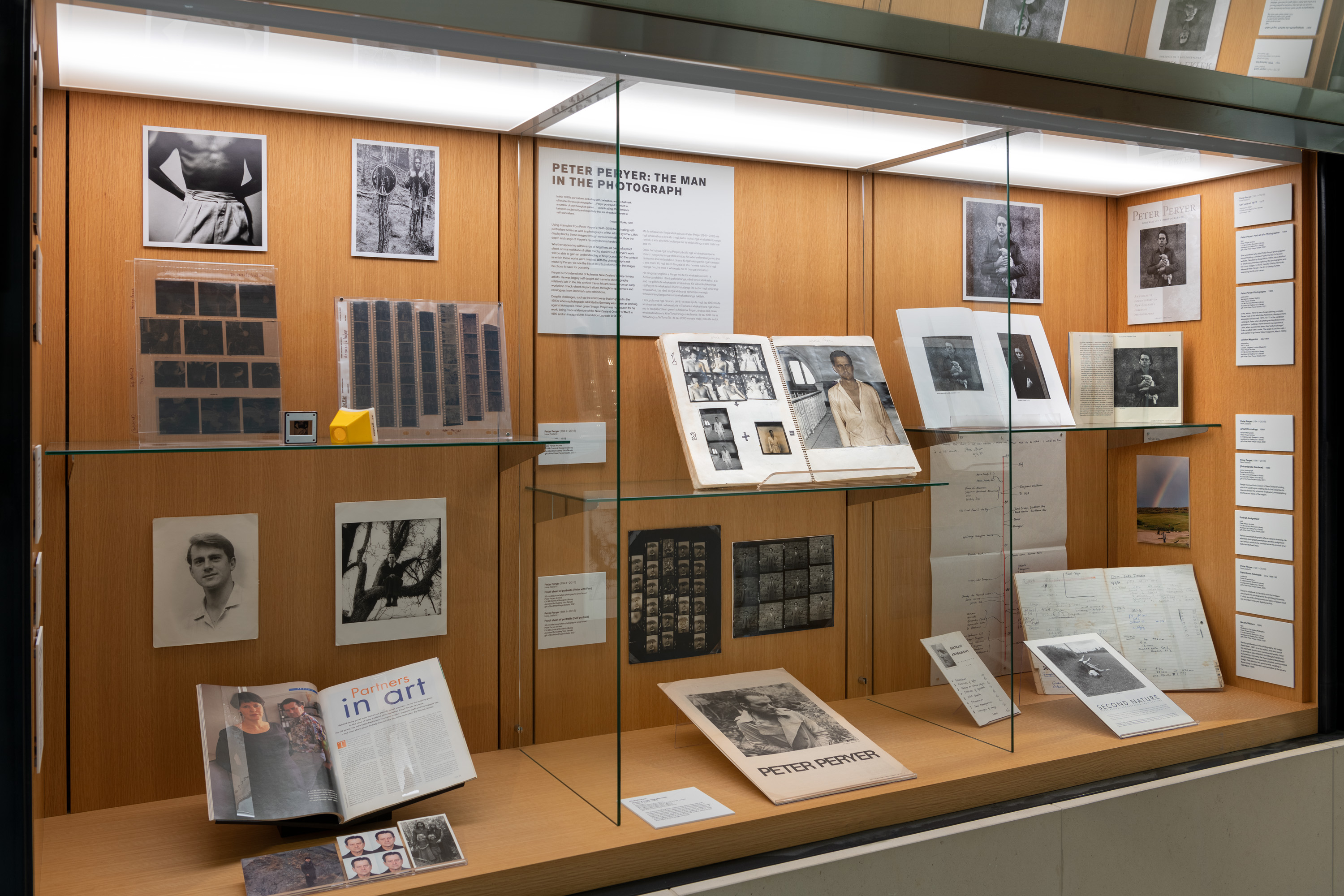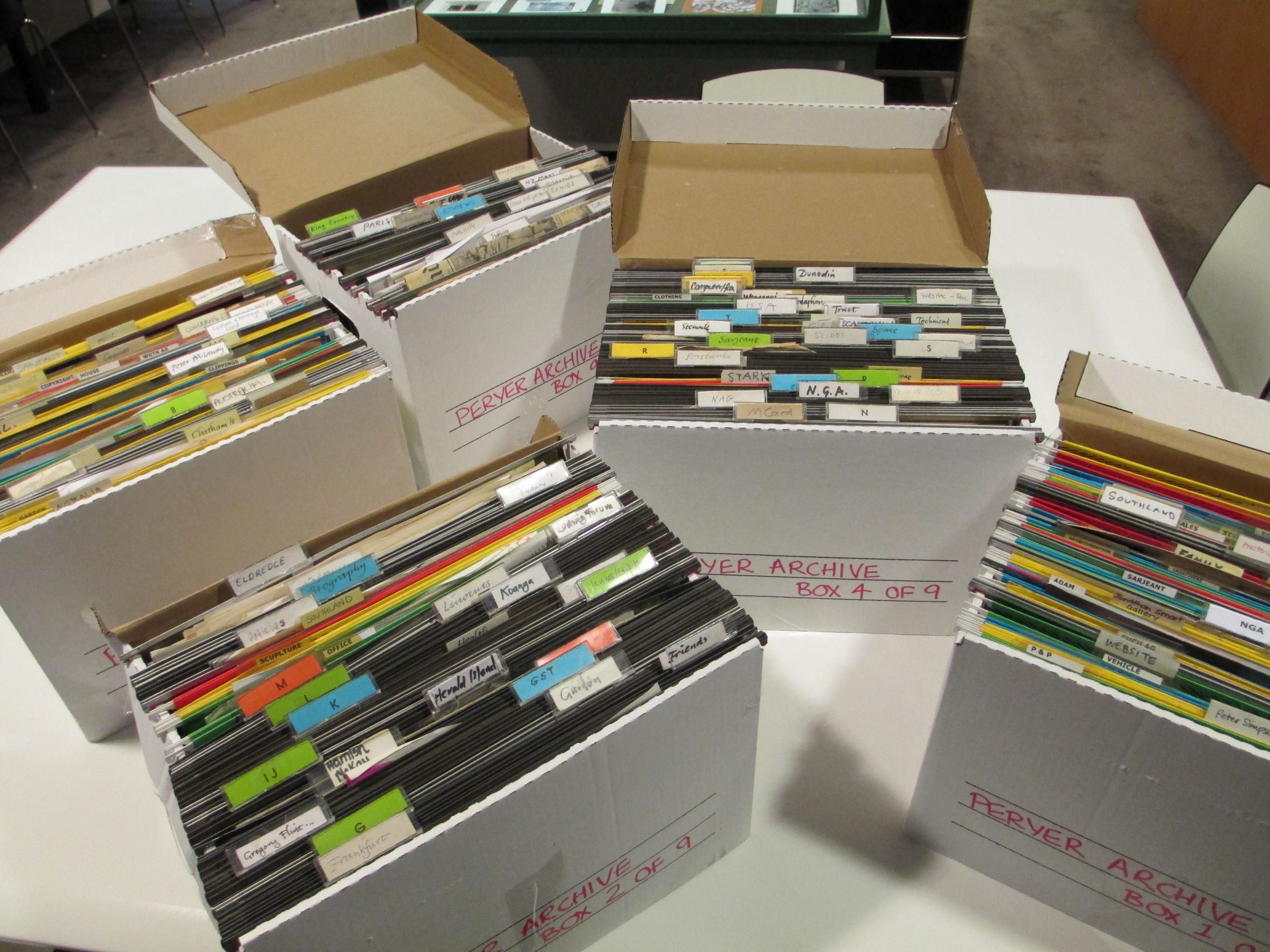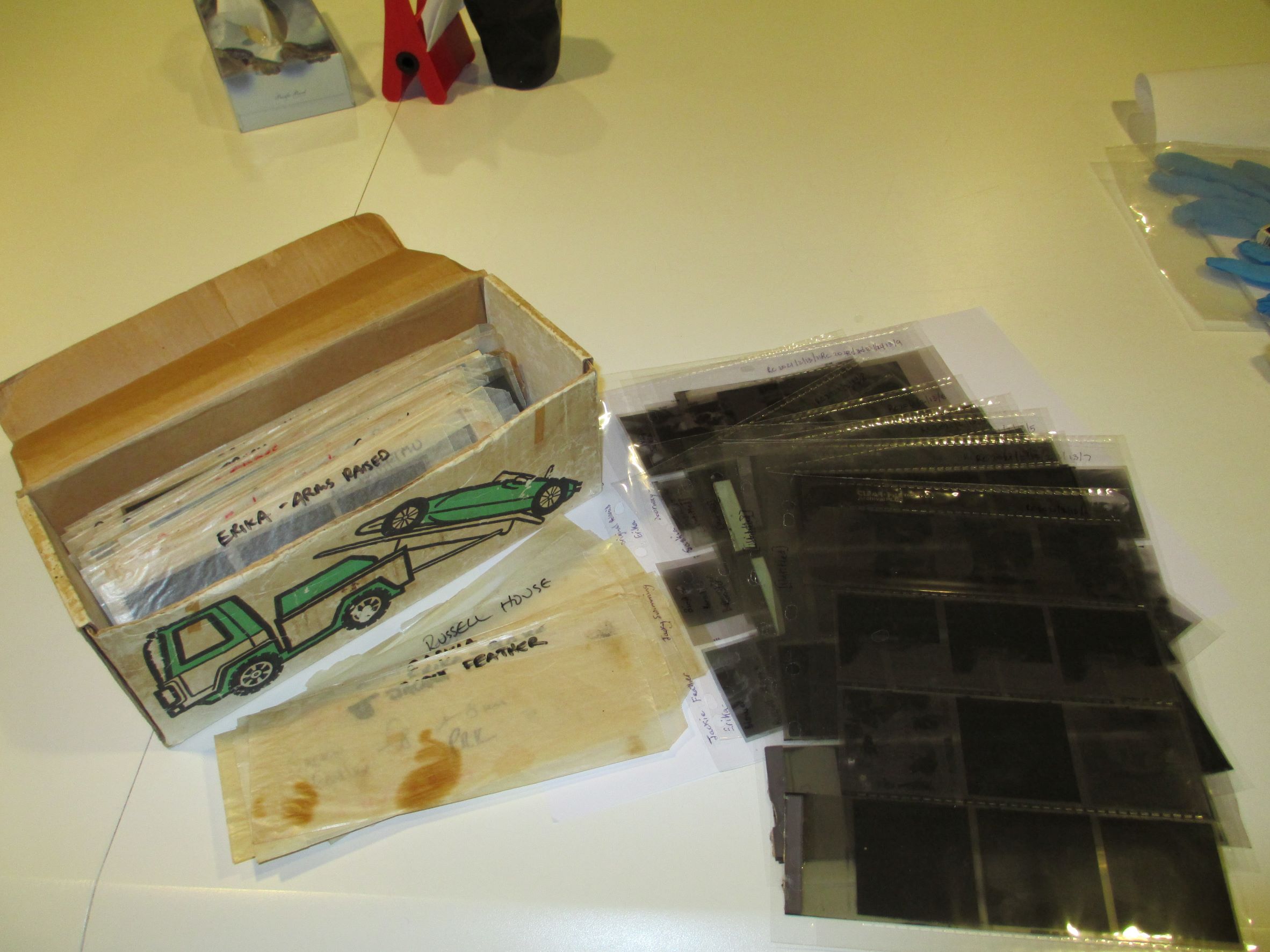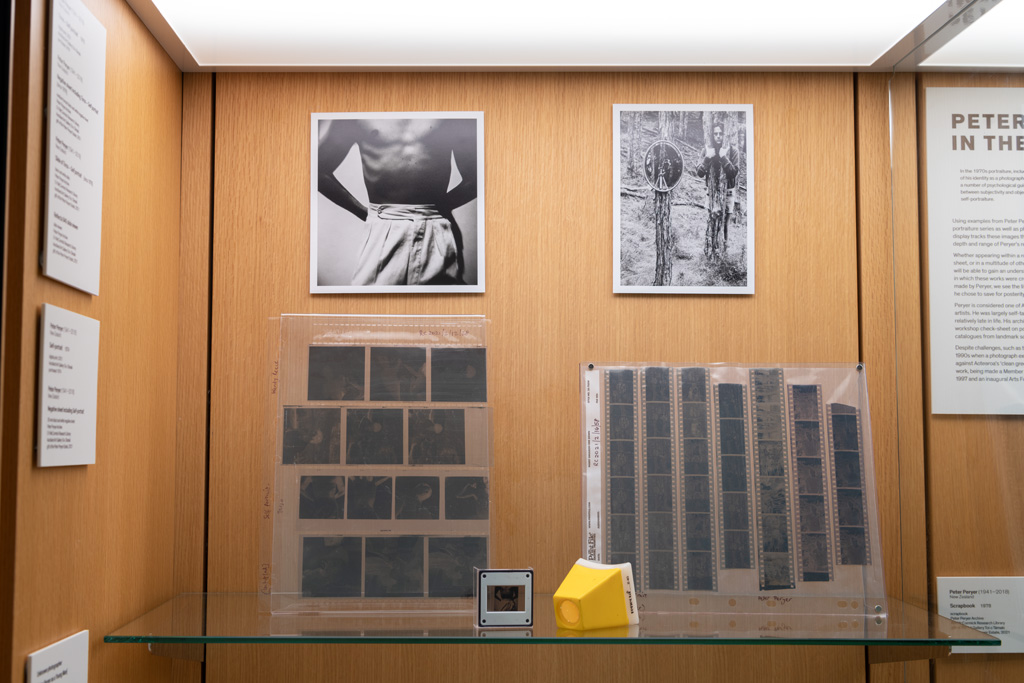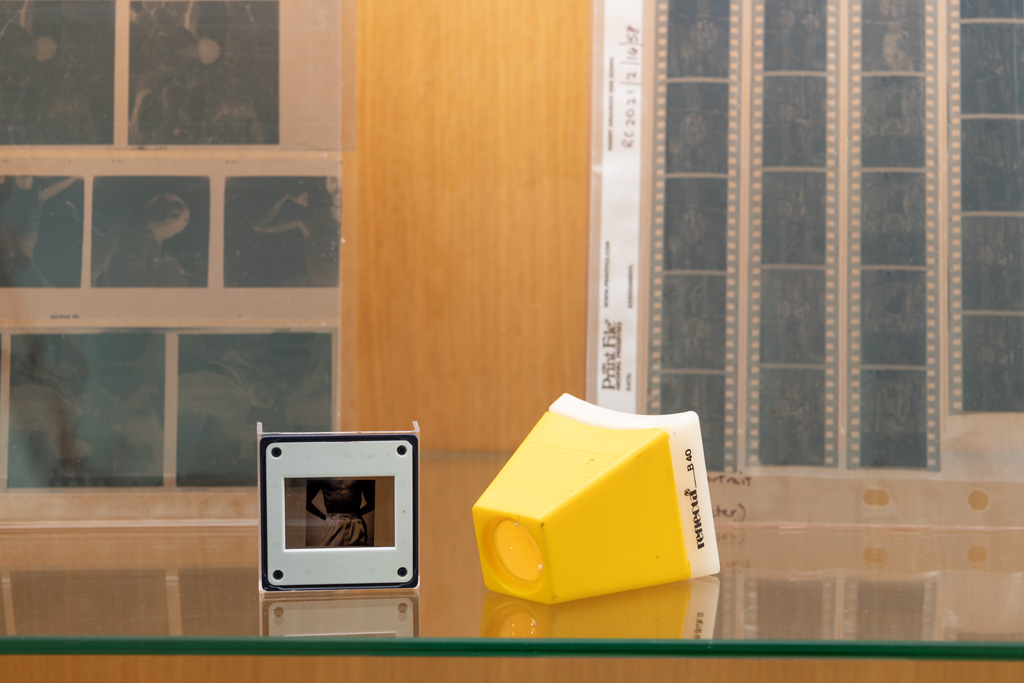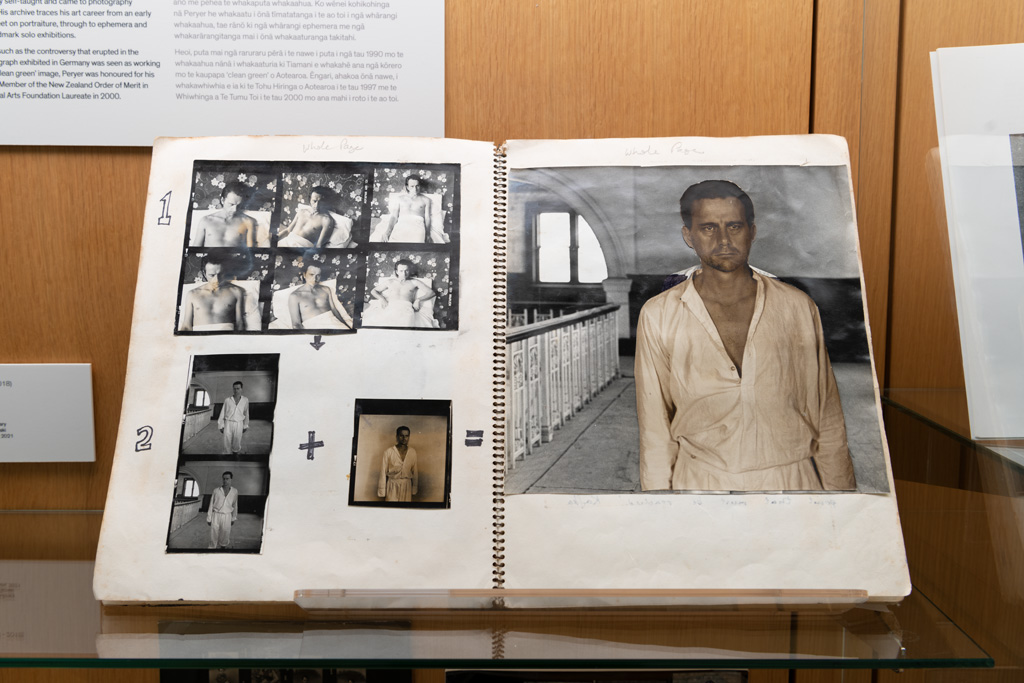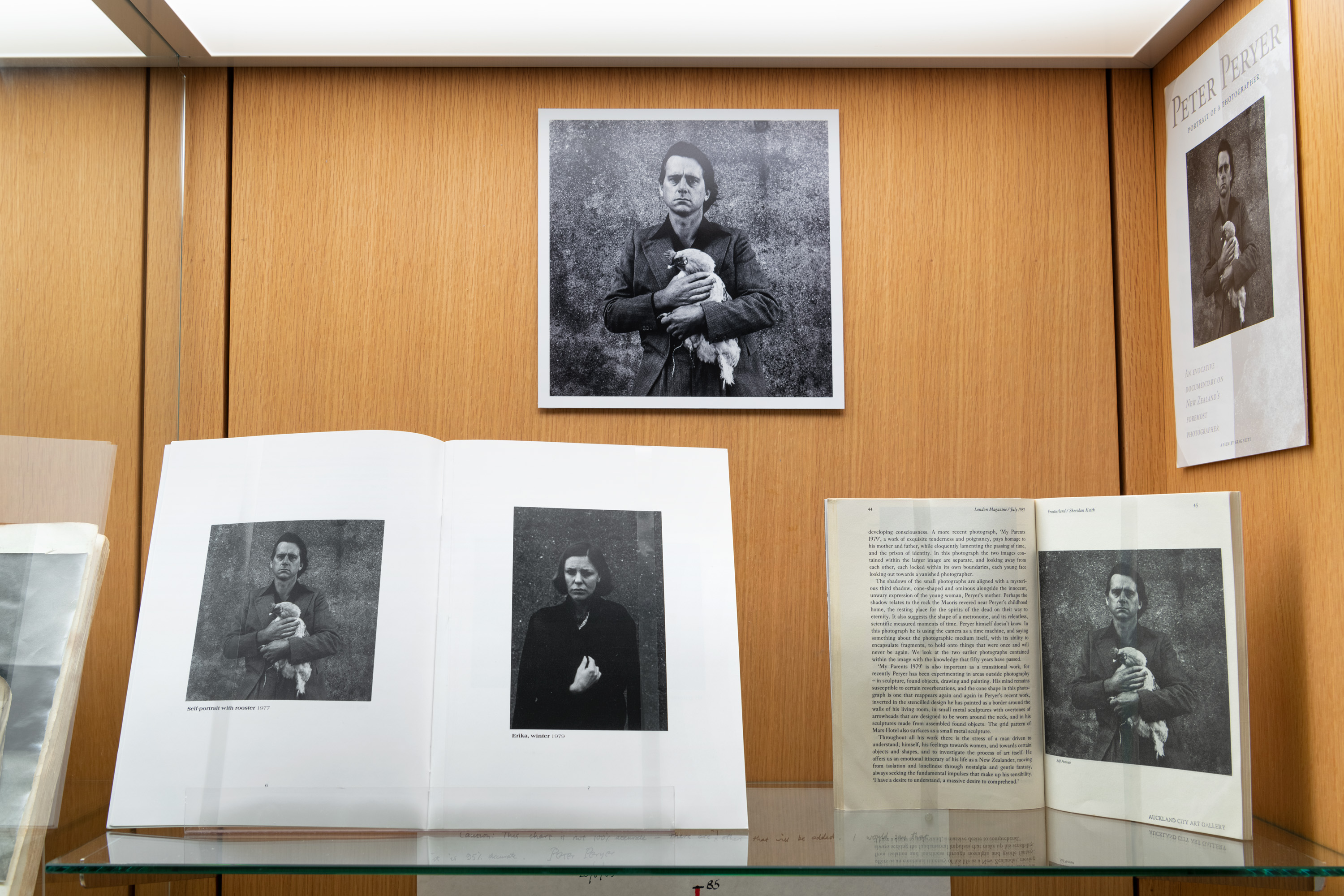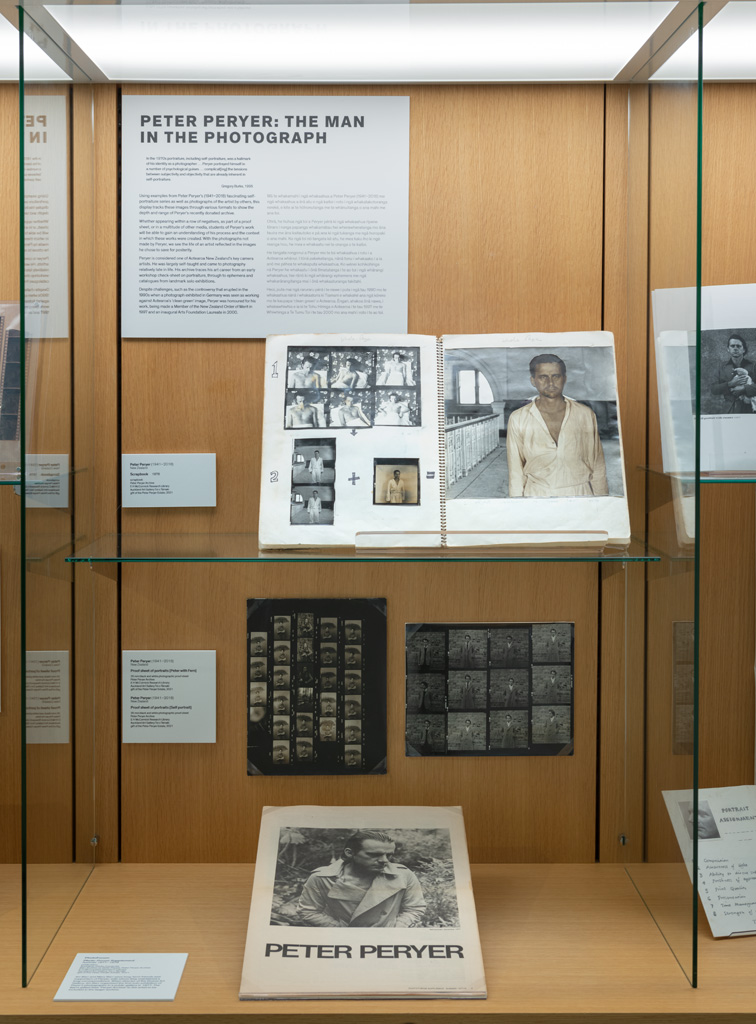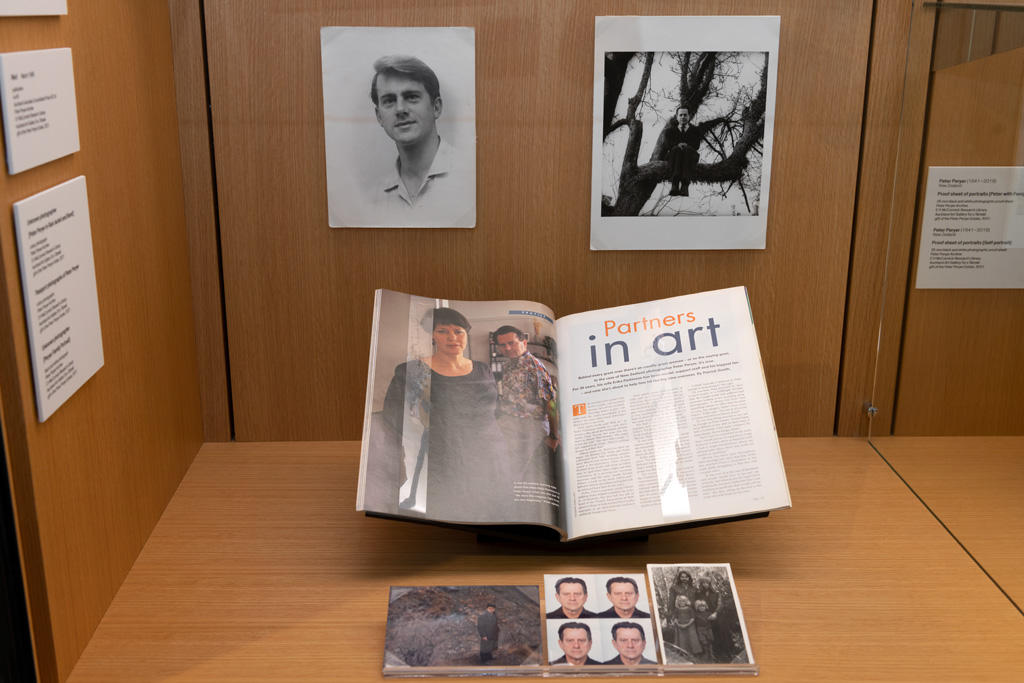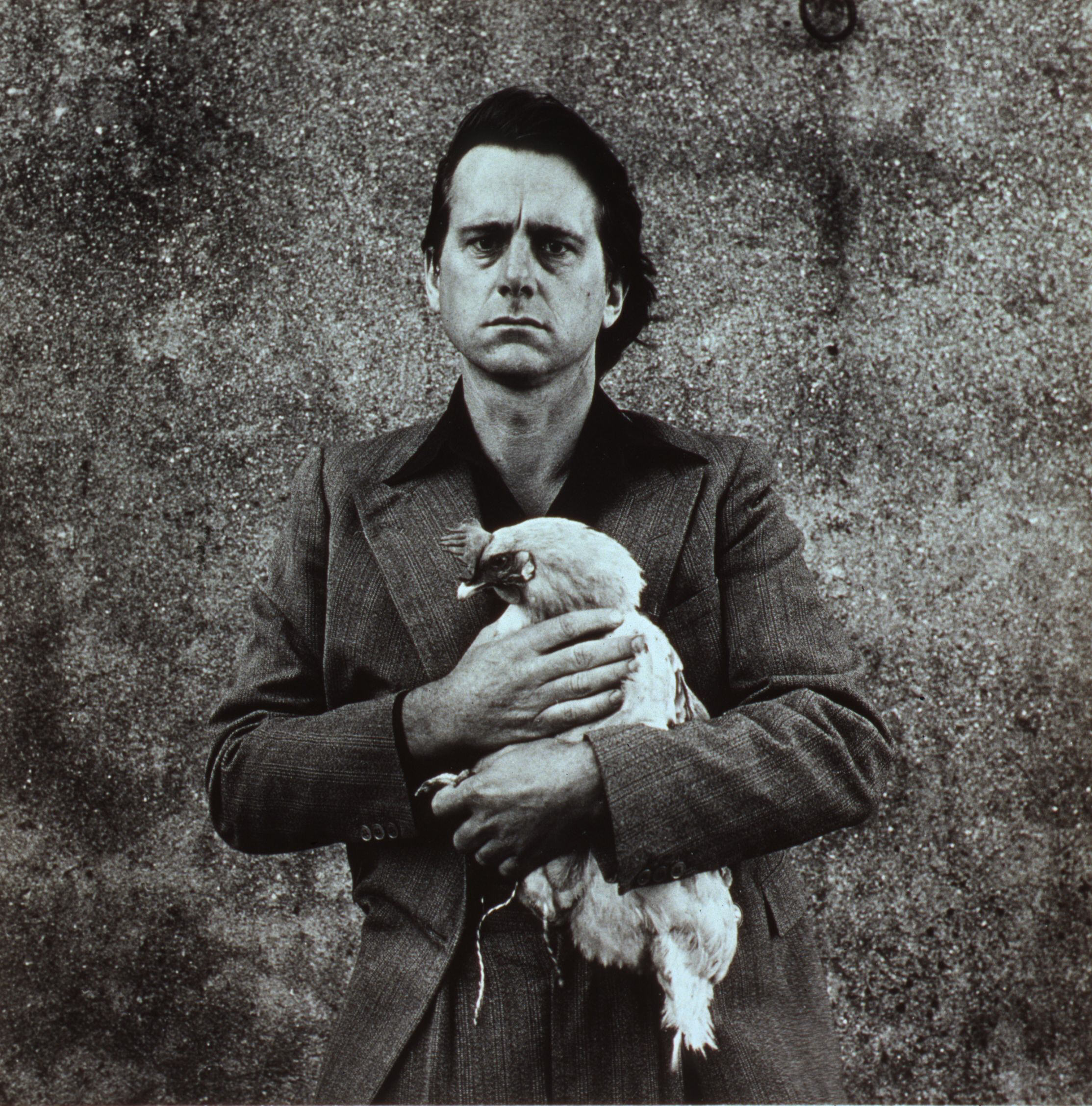It was April 2018 and Georgina Whiteley (Auckland Art Gallery Toi o Tāmaki Paper Conservator) and I (Gallery Librarian/ Archivist) had a job to do. We were in New Plymouth to take a close look at the archive of key New Zealand camera artist, Peter Peryer (1941–2018), to see what he was considering gifting and what its current condition was.
We were welcomed into a modest house in the suburbs with a well-organised studio/office just inside the front door that when you proceeded down the corridor opened into a much more chaotic and interesting living space. There were carefully selected objects, many books and on every available surface, plants. Even the bathroom held more plants than your average home. So, first impressions were that here was a man with a restless eye who liked to be surrounded by possibilities: things to both nurture and add to a collection and, possibly, to photograph.
Peryer had prepared for our visit by sorting through some of the material that had accumulated over his 40-year career. In a recorded conversation, he described it as ‘a bit of a cleansing process … very good for your health … It definitely feels as if there’s more oxygen in the house’. Deciding it was time to ‘streamline’, he ditched 1990s bank statements, for example, but relished the discoveries he made in the process. In particular, he was keen to revisit his contact (proof) sheets as he thought there might be ‘a lot of pictures in there that I would like to print up’ as he hadn’t printed them at the time they were photographed.
As to how his archive might work for researchers, Peryer was keen for students to have wide-ranging access, including being able to use his images in their assignments via small-sized reproductions. We agreed on what the archive would consist of and how the acquisition would proceed, and then Peryer very graciously played host on a tour of his beloved city.
Sadly, Peryer died later that year and may never have reviewed his earlier work in the manner he intended. His archive came to us as a donation from the Peter Peryer Estate in March 2021. A record for it can be found here.
What eventually came to the Gallery was essentially what we had agreed with the artist. As well as textual material such as correspondence, artist files and exhibition ephemera, there are contact sheets and negatives. The latter are both in 35mm and medium formats, and are mostly in black and white, though there are also colour slides. Some images are duplicated on the discs that came and, as well as these records of Peryer’s photographic output, we have his appointment diaries and some early scrapbooks. A smaller archive put together by Jim Barr and Mary Barr, art collectors, curators, and long-standing friends of Peryer, forms part of the larger Peryer Archive that we hold here at the E H McCormick Research Library.
Aside from a small number of working prints, the archive does not include silver gelatin/exhibitable prints. However, there are 75 Peryer photographs in the Auckland Art Gallery and Chartwell collections that researchers can refer to for an understanding of his practice.
